Shaping the Brain Beyond Habit: Amazing Benefits of Mindfulness
Mindfulness and neuroplasticity are transforming the landscape of mental wellness and personal growth. Neuroscientific discovery has revealed that no matter a person’s age or history, the brain remains dynamic and open to change. Old patterns—whether it’s chronic worry, self-criticism, or emotional reactivity—are not life sentences. With intention and the right methods, these patterns can be updated, allowing individuals to experience a lighter, more authentic way of being.
In today’s world, where stimulation and distraction are constant, learning how to shape your own brain is not just helpful but essential. At MindLab Neuroscience, these findings are woven into every aspect of coaching, providing clients with a real-world path out of old cycles and back into curiosity, purpose, and presence.
Why Mindfulness Changes the Brain
The link between mindfulness and neuroplasticity forms the foundation for deep, lasting change. Mindfulness is often misconstrued as simply “being calm” or “meditating,” but in reality, it involves active, moment-to-moment awareness of thoughts, feelings, and bodily sensations. Each time you observe stress without judgment, or notice yourself tuning out and gently refocus, you exercise neural muscles that rewire how your mind and body handle adversity.
Studies have found that mindful attention helps shrink overactive regions like the amygdala, while fortifying areas in the prefrontal cortex responsible for reasoning, creativity, and emotional balance. With regular practice, grounding in the moment becomes a natural buffer against overwhelm. At MindLab Neuroscience, mindfulness is taught as a set of living skills—quick practices and awareness tools that fit seamlessly into the busiest lifestyles.
The New Science of Neuroplasticity and Growth
Neuroplasticity is the brain’s ability to reorganize itself by forming new neural connections throughout life. This means transformation is accessible whether you are trying to break free from anxious loops, learn new behaviors, or recover from burnout. When clients blend mindfulness with neuroplasticity-based exercises, they don’t just “feel better” for a day—they gradually build new default settings for resilience and clarity. Repeat experiences of self-awareness, present-moment noticing, and gentle refocusing lay down powerful new tracks in the brain. Your story isn’t permanently written; it’s constantly being edited by the habits and thoughts you repeat. My coaching methods are constructed to familiarize clients with this science, making brain change accessible, understandable, and deeply empowering.
As modern research continues to reveal, mindfulness and neuroplasticity work in tandem to reshape brain networks responsible for stress, memory, and growth. Scientific studies show that consistent mindfulness practice increases production of brain-derived neurotrophic factor (BDNF), supporting brain cell growth, longevity, and synaptic plasticity. Enhanced connectivity between the prefrontal cortex and emotional regulation centers results from this partnership, meaning that individuals practicing mindfulness and neuroplasticity experience stronger control over their reactions and improved mood regulation.
In my coaching, these principles are not abstract but actionable steps—helping clients anchor their progress in observable neural shifts and long-lasting behavioral change. Mindfulness and neuroplasticity have been scientifically proven to reduce stress and anxiety, helping people manage emotional overwhelm and build lasting resilience from the inside out
The Evolutionary Advantage: Why Your Brain Is Wired to Change
Long before modern science confirmed it, our ancestors benefited from the brain’s natural neuroplasticity. Flexibility and adaptability have always been key to not just survival, but thriving in new environments, forging new relationships, and coping with uncertainty. Mindfulness and neuroplasticity unite ancient evolutionary wisdom with contemporary neuroscience, showing us that our brains are built for change—continually updating to meet new challenges. By activating present-moment awareness, we engage circuits that evolved for learning, creativity, and emotional connection. This evolutionary lens helps clients see their struggles with anxiety, distraction, or low mood not as flaws, but as invitations to tap into powerful, deeply rooted mechanisms of growth and transformation.
When we practice mindfulness and neuroplasticity, we’re following the exact adaptive blueprint our species relied upon to escape danger, learn new skills, and build thriving communities. Today, the arena may be a high-pressure job, a changing family, or online social dynamics, but the principles remain the same. Every coaching session at MindLab Neuroscience honors this heritage—helping clients become more attuned to their environment, more resilient when plans go awry, and quicker to recover from setbacks. The beauty of this approach lies in its universality, allowing youth, adults, and seniors alike to harness evolutionary advantages, rewrite their stories, and achieve lasting confidence and connection.
Neuroplasticity is not just a product of evolution—it’s one of humanity’s greatest adaptive advantages. From navigating unpredictable climates to responding to new social alliances, our flexible brains enabled each generation to survive and innovate in ways no other species could. Studies of neuroplasticity in both animals and humans show that enriched, changing environments actually drive the expansion and rewiring of brain regions, supporting creativity, problem-solving, and emotional resilience. By combining mindfulness and neuroplasticity today, we’re reactivating the same biological strategies that gave our ancestors their edge—transforming adversity into opportunity, and making the capacity for stress adaptation, learning, and personal reinvention an everyday reality for anyone willing to engage this powerful inner process.
The Pause Button: Breaking Anxiety’s Cycle

Modern neuroscience shows that anxiety’s habitual circuit can be interrupted by purposeful micro-interventions. A key element in my practice is teaching the “pause button”: a brief mental or physical pause whenever stress or self-doubt threatens to hijack your mind. This tool interrupts a downward spiral, giving your nervous system critical seconds to shift from fight-or-flight reactions to rational, conscious choice. Over time, this act of pausing literally strengthens the prefrontal cortex, weakening old anxiety paths and making confidence the new default.
Clients often report that what first felt impossible—to slow the rush of negative thoughts—becomes second nature with repetition. The pause button isn’t just avoidance; it’s an act of brain training based on the very principles of mindfulness and neuroplasticity.
What makes the pause button so influential is its immediate engagement of mindfulness and neuroplasticity, allowing for the rewiring of reactive thoughts in real time. With every deliberate pause, new neural connections form, giving clients access to calm and a renewed sense of agency even in stressful situations. Through regular practice, individuals develop an almost automatic resilience, enabling them to redirect anxious momentum into reflection, decision-making, and self-assurance. This technique demonstrates how everyday moments can be leveraged to harness mindfulness and neuroplasticity, restoring inner stability and preparing for future challenges.
Working Through Cognitive Distortions with Brain-Based Awareness
Cognitive distortions—automatic, exaggerated, and self-defeating thoughts—are common culprits in anxiety and low self-worth. In my neuroscience-based approach, clients learn to spot and disrupt these patterns using mindful, brain-based awareness. By teaching individuals to take a mental step back from their thoughts, we reduce their immediate power. For instance, rather than believing, “I’ll never overcome this,” you can notice, “My brain is telling me a familiar, old story.” This practice, supported by neuroscience, allows the prefrontal cortex to produce more balanced, constructive alternatives. Over time, individuals gain authority over their internal narrative, cultivating calm and a sense of agency. The learning isn’t theoretical—it’s embodied through repeated, real-life use of these strategies.
Mindfulness and neuroplasticity transform this process by offering practical exercises—such as labeling and challenging distorted beliefs, and noticing their emotional echoes—that reinforce new cognitive habits. As you consistently practice observing, reframing, and letting go, adaptive pathways are encoded in the brain, leading to greater flexibility in thinking and emotional stability. Clients come to realize that patterns of anxiety and self-doubt do not define them; instead, each new moment is an opportunity for positive neuroplastic change guided by mindful awareness.
What makes this work truly intriguing is its foundation in the evolving science of attention, memory, and habit formation. Modern neuroscience reveals that cognitive distortions can be traced to specific neural circuits that become activated through repeated stress, past traumas, or even well-meaning but outdated coping mechanisms. Through personalized coaching at MindLab Neuroscience, clients learn not just to notice these loops, but to systematically reshape how their brain responds—turning self-criticism into self-inquiry, and automatic overwhelm into intentional, grounded action.
Each breakthrough, however small, is proof that new, empowering thought patterns are not only possible but inevitable when we harness mindfulness and neuroplasticity intentionally. This brain-based mastery unlocks greater resilience, creativity, and self-trust—qualities that ripple out into every decision, relationship, and opportunity that life presents.
Embodied Mindfulness: Sensory Awareness for Resilience
Mindfulness and neuroplasticity are not purely intellectual. Coaching at MindLab Neuroscience also emphasizes the critical importance of body signals. Clients are guided to gently notice breathing, muscle tightness, heart rate, and posture—especially during times of tension or decision-making. Neuroscience shows that attending to these sensations calms the stress response and reconnects mind and body. Grounding in sensory experience expands the “window of tolerance” for stress, making it possible to remain collected and think clearly even during challenging moments. Over time, this practice fosters a more profound sense of resilience, enabling individuals to recover more quickly from setbacks and return with renewed purpose.
Working with mindfulness and neuroplasticity in a sensory framework also enhances the body’s feedback mechanisms. Techniques such as “moment-to-moment body scans” and targeted breathwork accelerate the brain’s ability to deactivate stress circuits and reduce amygdala reactivity. Clients who consistently develop these skills report fewer physical symptoms of anxiety and experience a growing sense of safety and self-trust. At MindLab Neuroscience, this embodied approach means resilience doesn’t just reside in the mind—it grows from every cell and sense.
How Does Mindfulness Help Neuroplasticity?
Mindfulness is a critical catalyst for neuroplasticity, activating structural and functional changes that enable the brain to adapt, learn, and grow throughout life. When people practice mindfulness—focusing awareness on the present moment without judgment—they engage regions of the brain responsible for attention, self-regulation, and emotional processing. Scientific studies demonstrate that mindfulness increases the thickness of the prefrontal cortex and anterior cingulate cortex, areas involved in executive function, decision-making, and emotional control. These changes strengthen neural pathways and promote greater flexibility, enhancing the brain’s ability to shift from reactive habits to deliberate, empowered responses.
On a cellular level, mindfulness boosts the production of brain-derived neurotrophic factor (BDNF), supporting neuron growth, synaptic plasticity, and long-term learning. As clients consistently apply mindfulness in daily routines—observing thoughts, using the pause button, and practicing self-compassion—new connections form that reinforce resilience, decrease stress and anxiety, and support cognitive agility. Research also highlights mindfulness’s unique ability to down-regulate the amygdala, the brain’s fight-or-flight center, leading to reduced emotional reactivity and a steadier mood baseline.
The more frequently mindfulness is practiced, the more enduring and dynamic neuroplastic changes become, creating a brain primed for growth and lifelong wellbeing. In the context of neuroscience-based coaching, these principles are translated into simple, actionable steps that empower clients to harness neuroplasticity and transform both mindset and lifestyle.
Journaling and Intention: Writing Your Brain’s New Story
Journaling is one of the most flexible and yet underestimated tools for neuroplasticity. At MindLab Neuroscience, journaling becomes more than simply recording thoughts; it’s a structured method for tracking successes, catching negative spirals, and reinforcing new behaviors. Clients learn to set specific intentions around mindfulness and neuroplasticity—such as focusing on the pause button in certain situations, or writing down moments of calm amidst chaos. The brain encodes these experiences, amplifying a mindset of possibility over impossibility. Journaling makes neural change visible and strengths tangible, as clients look back and notice shifts in mood, perspective, and confidence.
Harnessing mindfulness and neuroplasticity through journaling also bridges conscious goals with unconscious learning. Neuroscientific studies show that writing about thoughts, emotions, and achievements stimulates integrative regions of the brain, aiding in memory consolidation and the formation of new habits. Regular intention-setting generates anticipation and reward, incentivizing continued growth. Every journal entry becomes a roadmap for change and a celebration of progress, making transformation through mindfulness and neuroplasticity both trackable and deeply personal.
Building Your Routine: Practical Neural Pathways to Calm
True transformation is not born out of grand gestures, but out of the small, daily choices repeated with intention. At MindLab Neuroscience, we co-create practical routines where mindfulness and neuroplasticity blend. Starting the day with a minute of body scan, consciously using the pause button during meetings or tense moments, ending the evening with intentional gratitude—these practices are designed to match busy lives. Repetition is the scaffolding for new brain connections; each routine supports your new calm becoming second nature. This strategic layering of science-backed habits ensures both immediate relief and lasting resilience.
Over time, these simple routines activate the principles of mindfulness and neuroplasticity, making each day an opportunity for positive change regardless of circumstance. Personalized rituals—tested and refined in my coaching practice—give structure to the rewiring process and help clients consistently return to their center. As habits compound, stress triggers lose their dominance, and calm becomes the baseline response rather than the exception. By honoring routine, you turn everyday life into a laboratory for mindful and neuroplastic growth.
Technology, Attention, and Digital Wellbeing
In today’s hyper-connected world, protecting your brain from constant digital distraction is no small feat. Mindfulness and neuroplasticity offer a powerful antidote to the pull of screens, notifications, and information overload. Every digital interaction trains neural pathways—often toward scattered attention, impulsive reactivity, and chronic overstimulation. By deliberately practicing present-moment awareness, taking mindful screen breaks, and using techniques like the pause button before switching tasks, clients can start reclaiming cognitive control.
MindLab Neuroscience coaching guides individuals to set boundaries on device use, embed mindful breaks into routines, and design “digital transitions” that restore focus and calm. Each intentional pause helps reinforce neural pathways for impulse control, reduces stress hormones, and sustains mental clarity.
Embracing mindfulness and neuroplasticity in the digital realm is not about eliminating technology, but leveraging brain science to use it with greater intention and resilience. Regular practices—such as unplugged walks, conscious tech-free meals, or short meditative check-ins before returning messages—retrain attention networks and reduce the cumulative impact of digital stressors. Over time, the brain becomes more resistant to distraction and better able to shift between online and offline states.
My clients report increased productivity, deeper presence in personal relationships, and a more balanced inner narrative—proving that modern living and mindful neuroplasticity can thrive together. This section attracts readers seeking neuroscience-based solutions for digital overwhelm, positioning your services as uniquely equipped to meet those needs.
From Overwhelm to Ownership: Real-Life Transformations
Perhaps the most potent motivator for new clients is the real progress witnessed by peers. For instance, a professional arrived feeling scattered and reactive, struggling to set boundaries in a demanding work environment. Through repeated pause button practice, regular journaling, and learning to spot cognitive distortions, she not only managed stress more effectively but also noticed a new respect from colleagues and a marked improvement in decision-making.
In another case, a young adult struggling with social anxiety gained confidence and ease by coupling mindful sensory tracking with small social challenges, step by step. These stories are not about instant miracles, but about steady, science-based shifts toward lasting confidence that MindLab Neuroscience uniquely delivers.
These transformations are sustained because mindfulness and neuroplasticity equip each client to become their own coach, scientist, and advocate. As new skills are mastered, they foster deeper levels of self-ownership, shifting from overwhelm to a sense of control and optimism. Clients who once felt helpless now initiate positive changes in relationships, careers, and personal health, spreading the benefits of mindfulness and neuroplasticity far beyond the initial session or challenge.
Beyond the Mind: Relationships, Community, and Culture

The impact of mindfulness and neuroplasticity extends well beyond individual transformation—it shapes relationships, workplaces, and entire communities. When people learn to approach challenges with self-awareness instead of reactivity, communication improves, empathy deepens, and collaboration flourishes. In family settings, practicing mindfulness routines creates emotional safety, helping both parents and children build resilience together. Organizations that prioritize these practices see reduced burnout and greater innovation. By changing brains one at a time, we collectively create ripples of resilience and hope that travel further than we often realize.
As more communities, schools, and organizations adopt mindfulness and neuroplasticity principles, group dynamics improve and collective well-being increases. The ripple effect is measurable—improved emotional intelligence, curiosity, and adaptability become shared values, strengthening the social fabric. My work at MindLab Neuroscience frequently integrates community workshops and resources that teach these skills en masse, proving that personal change can powerfully drive cultural evolution.
Wired for Resilience: The Science Behind Sustainable Change
Lasting change is rarely about willpower alone—it’s about understanding your brain and working with, not against, its design. At MindLab Neuroscience, every session, technique, and resource is carefully crafted to empower clients in their partnership with their own brain. Whether you’re striving to overcome anxiety, break free from old stories, or unlock new potential, integrating mindfulness and neuroplasticity offers a data-backed doorway. By combining modern science, practical tools, and ongoing support, we empower you to cultivate calm and teach your mind—at any age—how to move forward with renewed confidence.
Distinct from trends or “quick fix” programs, my approach is grounded in peer-reviewed science and evolving neurobiological evidence. Mindfulness and neuroplasticity are the gold standard for sustainably improving wellbeing, adaptability, and purpose. As research advances, clients benefit from new tools and insights, keeping change dynamic and future-focused. At MindLab Neuroscience, your partnership with your brain becomes the source of lifelong growth and satisfaction.
What Happens Next? Your Curiosity Is the Catalyst
If this approach feels different, it’s because it is. Instead of quick fixes or generic advice, you get a neuroscience-backed partnership, customized to your experiences and your aspirations. The journey is not limited to what happens in a session—it’s designed to become a living part of your story, empowering you to engage with stress, setbacks, and opportunities for growth in more profound, more sustainable ways.
Curious what working directly with this brand of science-led coaching could unlock for you or your family? You’re invited to learn more, ask questions, or explore resources and stories on the MindLab Neuroscience website. Each step forward, driven by curiosity and a willingness to learn, creates new connections not only within your brain but in every aspect of your life.
For readers considering whether mindfulness and neuroplasticity could spark their next breakthrough, the invitation is simple: continue exploring, experiment with the tools described, and notice what shifts. The combination of personalized, neuroscience-based coaching and proven, practical methods is designed to support every brain’s ability to transform—and every person’s capacity to find authentic confidence and calm.
#MindfulnessAndNeuroplasticity #NeuroscienceCoaching #BrainRewiring #CalmConfidence #MindLabNeuroscience #Neuroplasticity #PersonalDevelopment




